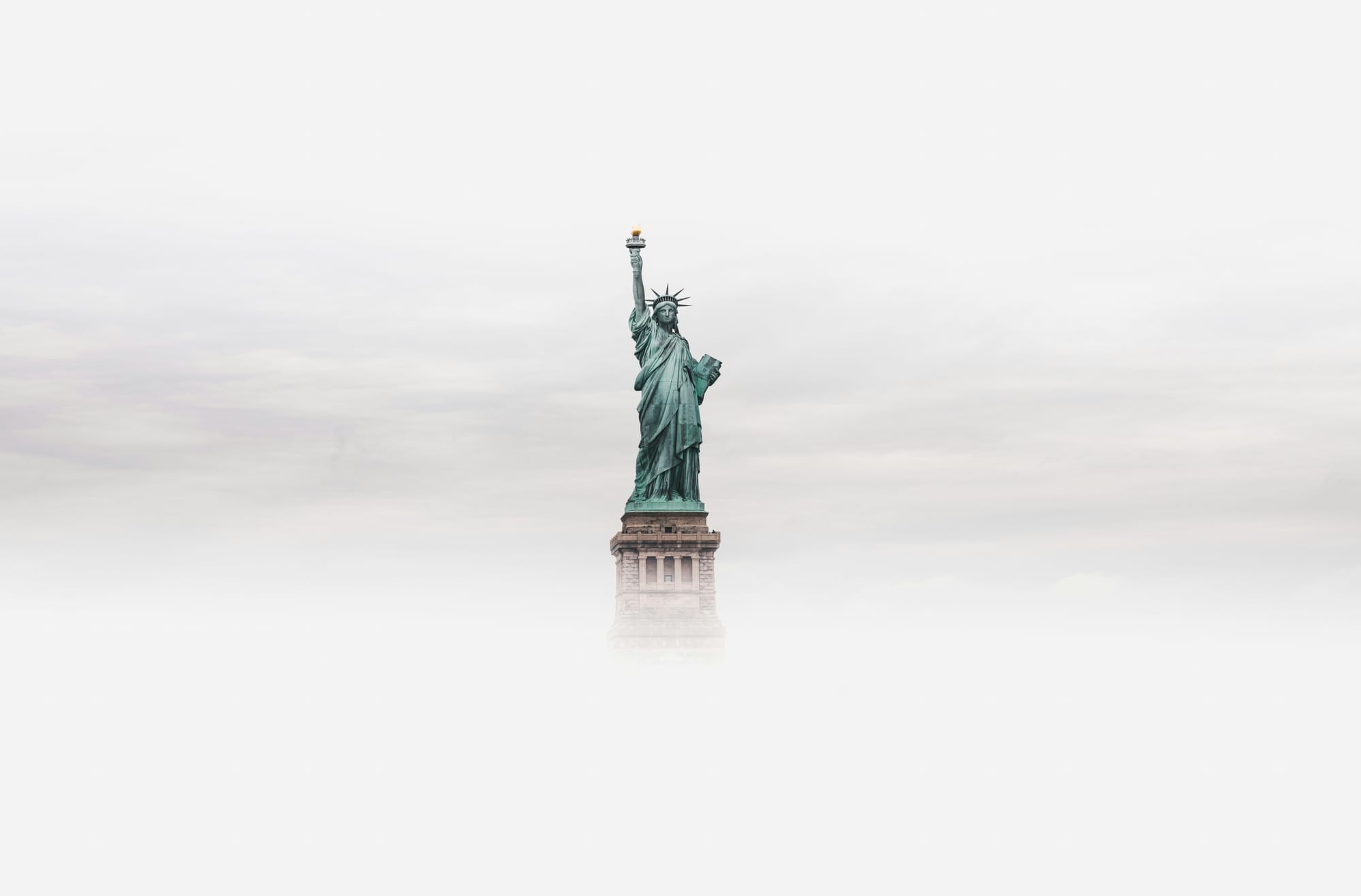The Great Experiment

I recently came across New Birth Missionary Church and its pastor, Jamal Bryant, after a tragic event that resulted in an overlapping work assignment. Shortly after the event planning, on a Sunday morning, I sat down in front of my TV with a coffee and scrolled through my YouTube feed. New Birth’s live stream appeared in the top selection of the app, and I figured it was a Sunday so, why not?
Before Pastor Bryant came to New Birth in December 2018, it had been pastored by Eddie Long since 1987. Long had grown the church from humble beginnings to a congregation of 25,000. He had hosted former presidents Carter, George H.W. Bush, and Clinton. In 2010, Long found himself, like many megachurch pastors in America, mired in scandal when four male congregants accused him of sexual grooming and abuse. Long settled out of court for an undisclosed amount and died of cancer in 2017. He was replaced by Bryant, who had previously pastored Empowerment Temple African Methodist Episcopal Church (seriously) and found himself wrapped up in sexual misconduct in 2020. From the outside looking in, these actions could be considered slightly scandalous, but not illegal.
I started the stream just in time to hear the pastor say, “Something amazing happened this week, and because I’m standing on this pulpit, I am charged by the state to be nonpartisan.” He then said he doesn’t make the news; he just reports it. After which, he said, “For the first time in U.S. history, a president is a felon.” Pastor Bryant then raised the argument that with 34 felonies, if a man is still able to run for president, then perhaps this is the appropriate time for members from marginalized communities not to have to report past felony convictions on job, rental, and college loans applications.
The pastor then asked all persons attending the service with a felony conviction to come to the altar so she could pray for them. It was a compelling moment when approximately 30 people, some of whom may have been standing in for others close to them, moved to the front of the stage as their courage was supported by enthusiastic applause from the congregation.
I remember a similar argument to Bryant’s surfacing during 2012’s period of legalization of recreational marijuana. Between 2012 and 2022, 23 states legalized marijuana for recreational use by adults. Today, a majority of Americans live in a state where marijuana is legal for medical or recreational use. Yet, many remain incarcerated, and most of those are due to possession charges. Of those still incarcerated, a disproportionate number of those incarcerated are persons of color from minority groups; despite the use of the drug being strikingly similar across racial demographics, Black and Latinx (or Latine) people make up the majority of those incarcerated for marijuana possession.
It’s an interesting juxtaposition. A former US president with a felony conviction is not prevented from running for reelection. Yet, American citizens who have a felony past cannot take simple steps for their life, liberty, and pursuit of happiness. Further, in a country rife with intense debates surrounding racial and gender disparities, a disproportionate number of those citizens who must check those boxes for felony convictions are minorities. To many, this looks a little suspicious. It appears to be a classic case of “the rules for thee, not for me,” but is that true? Likely controversial, but not illegal.
Politicians (and pastors, for that matter) always seem to break their own laws. A look back at 1974 will remind us of the Watergate scandal when Republican administration officials were caught burglarizing the Democratic National Committee headquarters. Then President Nixon’s actions to cover up the events led to what many called a “constitutional crisis,” and the House Judiciary Committee was granted expanded investigative authority to lead to impeachment proceedings. The proceedings resulted in Nixon’s resignation; he was succeeded by Gerald Ford and given a blanket pardon for any crimes he may have “committed or may have committed or taken part in” by Ford. This case is also controversial but, in the end, not illegal.

American political and religious leaders form long lists of elected officials and pastors who have found themselves in scandal, impeachment, civil, and even criminal court cases, but rarely convictions. More narrowly, what Bryant alluded to is that the dilemma presented is one embodied in a multi-part political debate that includes racial and economic inequality in our institutions.
For those not interested in that kind of conversation, skip to the conclusion. In reality it is a much simpler conversation- again, about something controversial, but not illegal.
If you're interested in the social justice debate, this case is as dense a socio-political dilemma as they come. Yet, thinking carefully about this conversation, to the constituents in New Birth's congregation, it is a discussion about economic prosperity underpinned by political motivations. It is layers upon layers of economic, religious, racial, and social schools of thought where all the players are on high alert for tribal queues used to quickly place the other into tidy stereotypical bins constructed of evidence that their opponent is not one of their teammates. It is the internal American population’s struggle over the balance of power, and it gets its roots in the version of American history you may or may not have learned in grade school.

Some might call this a conversation is about competing narratives. The narrative I was raised with in southeast Texas, as presented by my non-denominational, private Christian school’s curriculum, was a linear progression: Jesus > Mayflower > Constitution > Republican Party. Very neat and very convenient. To my childhood companions, anything beyond this narrative is often dismissed as sacrilegious.
A brief but much more genuine version looks like this: Paleo-Indians from Siberia migrated to the tip of South America and populated the entire land mass. It would be another 15,000 years before the Norse Vikings arrived in Newfoundland. Then, the Spanish came in the late 15th and 16th centuries, with Columbus in 1492. After the Spanish came the English in 1607, the French in 1608, enslaved Africans in 1619, and then the Dutch in 1624. The Scotts and the Irish in 1718, then the Germans shortly after. During their potato famine in 1845, the Irish immigrated in droves, the Chinese in 1849—the Scandinavians in 1862, and the Italians in 1880. The Japanese immigrated to the U.S. via California in 1869, followed by the Russians in 1914.
Recounting the migration of peoples to the Noth American continents is precisely the problem. The requirement to pay homage to every past injustice when we perceive a new injustice not only laborious, but it is also incredibly distracting. Especially when the perceived injustice is likely a misunderstanding brought about by the conflation of two ideas.
America's founding principles and democratic system are unprecedented, as our country aspires to be a new kind of "civilization" distinct from the European powers of the past. To quote George Washington in 1790, “The establishment of our new Government seemed to be the last great experiment for promoting human happiness.” As we work together in our great experiment, we listen to others and give credence to arguments, even when they are misguided.
“…the last great experiment for promoting human happiness”
These are, of course, my distillations, but they are not too far from what many social scientists believe are the roots of racial tensions connected to the blending of diverse demographic backgrounds. From the racial inequality perspective, many will claim that the racial disparities in the criminal justice system today are rooted in a long history of oppression and discriminatory policies that have deliberately targeted Black people, dating back to the post-Civil War era. Laws like the Black Codes, vagrancy laws, and convict leasing were used to continue control over newly freed Black people after slavery, and this laid the foundation for associating Blackness with criminality. Many social scientists will argue that this association has strongly influenced the American population’s (even Black American’s) mental model of what is and is not criminal today.

There has been a significant amount of social science research that has damaged racial tensions in America. A prominent example is Richard Hernstein and Charles Murray’s The Bell Curve, published in 1994. They added to the American social conversation on financial income, job performance, out of wedlock births, and crime by linking these indicators to IQ. The authors supported prejudgments and ideological misconceptions of minority groups in America with a few critical mistakes:
1. They made a whopping assertion that talents were attributed solely to IQ.
2. They claimed that intelligence could be labeled as a deterministic trait for financial outcomes.
3. They ranked IQs by race placing Asian Americans first and Black Americans last.
To proponents, their research seemed logical back then, and even though it was controversial, it was not illegal. However, these controversies are precisely what a German social scientist, Rick Nevin, set out to challenge in 2012. In a 10-page paper, Nevin showed how trends in violent crime, unwed pregnancy rates, high school dropout rates, and IQ/SAT scores tracked closely with preceding trends in preschool lead exposure from and lead paint. Using Hernstein and Murray’s same population sample, Nevin showed a nearly 1:1 correlation, which suggested a causal relationship between toxic lead exposure and poor cognitive development and severe behavioral problems. These racial demographics were measured by the American geographical distributions for Black Americans in densely populated urban areas which had higher levels of toxic lead exposure. While the other racial groups from rural or suburban areas that Hernstein and Murray included in their work had significantly lower or no lead exposure at all.
Further, Nevin argued that the impacts of lead exposure on neurodevelopmental damage and cognitive deficits were barely acknowledged in the fierce IQ debate sparked by Hernstein and Murray’s work. His analyses found that the birth years (1960s-70s) examined in The Bell Curve coincided with peak lead exposure levels, likely exacerbating differences in estimated behavior risks associated with IQ during that period.
Still, with all that Nevin did to demonstrate the social consequences from toxic lead exposure for Black Americans, however we have some hard facts to face here. Fifty years later, as 12.5 to 13% of the population, Black American males make up nearly 60% of all violent crime in America. Clearly not all Black males are criminals, and not every crime can be attributed to adolescent blood lead levels. But the data point begs the question of why? Some may argue that while approximately 42% of the people on death row are Black, nearly half of the 3,000 people exonerated from wrongful convictions since 1989 are also Black. While Black Americans are overrepresented in violent crime offenses, proving causation is just as challenging for those claiming systemic racism as, it was for Nevin and toxic lead levels.

From the wealth inequality perspective, Black business owners make up only 4.3% of the total American business owners in this country. If you’ve read The Case for Reparations, Ta-Nahesi Coates will tell you about our country's housing inequality. Coates’ work highlights a disturbing pattern of land theft from black families, tracing its roots back to the antebellum period. Home ownership and housing markets have long been linked to wealth generation in America. Yet, for minority and marginalized groups, home ownership has been systematically prevented by creative yet discriminatory lending, tax, and zoning laws.
The system of housing discrimination was further reinforced by income, employment, education, and associated policies to help not only whites because they were white but also because they were the majority group. Consequently, the majority group controlled most of the wealth, which became a reinforcing and balancing system. If you had wealth, you were trusted to generate more of it. Wealth is power and, ultimately, influence. Many Americans believe that their wealth is the product of their hard work, and while that may be true, the fact that their wealth is also the product of the hard work of others is also true. Conveniently, there are very few repercussions for blaming people with low incomes for their circumstances.
America has a rough history of housing discrimination. A 2001 Associated Press investigation exposed a systematic theft of black-owned land in America, dating back to the 1860s. Uncovering deep-rooted injustices faced by Black families, from fraudulent contracts to acts of terror, the methods used to dispossess black landowners were diverse and alarming. Examples cited were the conversion of stolen land into a Virginia country club, oil fields in Mississippi, and a baseball spring training facility in Florida, highlighting America's wealth and economic inequalities. The AP series brought attention to needs specifically for black Americans locked out of their land and housing-based wealth generation opportunities.

Are racial and wealth inequalities unique to the United States? No, they appear to be a global problem. Throughout human history and even in homogenous countries (where everyone looks the same), the presence of majority and minority groups has always created inequalities. This problem is a human problem of social organization created by differences in value systems. These differences in value systems have always led to conflict in some form or another. A 2023 report of the ten worst countries for racial equality lists Serbia, Qatar, Saudi Arabia, Iran, Israel, Myanmar, the UAE, Russia, El Salvador, and Sri Lanka as the top 10. They all suffer from these same kinds of social disparities that Americans and others have experienced in social organizations with majority groups.
Historically, when a majority group senses its political power is waning, it may undertake several unsavory actions. They may work to suppress the voting rights of others, entrench systemic advantages, work to inflame majority grievances, and even embrace abandoning the rule of law altogether. In essence, a waning political majority may be tempted to take anti-democratic measures to artificially preserve its dominance over minorities, violating principles of majority rule, minority rights, and fair political competition. These actions can destabilize institutions and lead to the oppression of minority groups, creating a precarious position for the majority if they ever become a minority group.
Yet, these actions and their underlying motivations are not unique to any racial group. They are inherent across all demographics. Our past examples highlight the massive Irish immigration period of 1854 when the xenophobic Know Nothing party was opposed by the nativist American Party ideologies for influence due to the Irish not being considered as part of the “white” majority. Over time, the boundaries of “whiteness” expanded, and the Irish became assimilated into American culture. Sound familiar? We have very well-documented cases of Native American genocide, anti-Italian lynchings, anti-Chinese massacres, and anti-Japanese racism and incarceration. These are people's problems, and they are not uniquely American.

What about minority groups?
The US census projects that by 2043, minorities will be the primary demographic engine of US future growth. If the trend holds, non-Hispanic whites will make up 49% of the population, while minority groups will make up the remainder. Combined racial minorities will grow by an average of 74% as multiracial groups, Asians, and Hispanics, leading these growth rates with 176, 93, and 86 percent, respectively. Given that our social boundaries and treatment of each other evolve with our population, one would naturally assume that some things would change.
So, what can minority groups do to improve their position in the spheres of influence? I mean, we can’t all have megachurches. They need to use the system’s as it was designed. If they use violence, they will be declared a terrorist organization and subject to methods of retaliation. While it may have been easier for other ethnic minorities to assimilate to the majority culture, a feature some attribute to them being “functionally white,” the data suggests other minority groups have participated in the majority group’s economic and civic processes more readily than Black Americans.
Minorities may find more success by forming coalitions and aligning with other minority groups facing similar challenges. This alignment can help amplify their collective voice and negotiating power when pushing for greater rights and representation. These power-sharing institutions are often engineered to exclude very small "micro-minority" groups from benefitting. Still, minority advocates must be vigilant to ensure the criteria do not systematically exclude more minor minority factions.

"A rising tide lifts all boats"
American criminal justice reform is continually evolving, just like the rest of our civic processes (including election law). Like many things dealing with people, they are a product of the times and their environment, and they are the result of those who wield the most power within the system. While New York may no longer tolerate hush money payments by candidates running for political office, their case against the former president may indicate future reformation.
Regardless, there is strong evidence to support the position that closing the racial wealth gaps in America will boost consumption and mean new economic participation opportunities- in economics, we call that growth. Many consulting firms and government agencies like the Department of Labor cite the community wealth, savings, income, and consumption as underpinning our social systems, and they, in turn, affect the way Americans enact their social roles as citizens. By examining our racial and economic equality, we can work to repair our frayed social fabric in the United States. In the land of the free, creating any new law warrants intense political debate, but at some point, we must acknowledge that partisanship, much like tribalism, will do more harm than good. We must shake off our learned victimhood and the outrage culture when we feel trapped by social change.
Here are some additional suggestions of things we can do:
First and foremost, the establishment of a national strategic narrative is crucial. This concept, not of my own creation, was introduced to me through Mark Myckleby and Wayne Porter’s work in 2009. This might be a challenging concept to understand at first but t's a concept I firmly believe we need. Penned under the pseudonym “Mr. Y,” the authors make a great case for realigning the American identity with our values. It is a call for response to changes in the global system we cannot ignore and means that we should welcome another nation’s ascent to power when that nation embodies our values.
Second, we must focus on our problems, not our identity groups. When we do otherwise, we tend to see people or groups as enemies instead of the issue we’re having. Need an example? Many Americans saw the January 6, 2020, riot at the American capitol as a uniquely Republican problem. Instead of taking issue with those responsible for the destruction of property and the threat to the lives of elected members of Congress, many Americans misplaced accountability by blaming the entire Republican party as the enemy.
Third, we can work toward bipartisan justice reform. From prison sentencing to education for the incarcerated and even removing the boxes on some applications, we can move toward fairness in our criminal justice system. Reform can include an examination of felony convictions to hold certain offices, and maybe remove the disclosure box for others.
Finally, we can stop going to the federal government and the Supreme Court for everything. Shifting decisions to local and state levels can reduce national divisiveness and allow our tailored regions (states) to handle their own business.

Conclusion
If anything, this work illustrates that one of the most obvious reasons why our political discourse is so cumbersome, and exhausting. We are often forced to acknowledge far too many variables to find a path to a satisfying conclusion. We simply can’t stop every conversation about a real issue we are facing to acknowledge all the marginalized minority groups. We cannot ignore the social inequalities in our country, but we cannot blame everything we experience on racial differences.
Further, we often conflate ideas and mistake them for examples of inequality. Something controversial is often mistaken as illegal. The conflation problem is present in Bryant’s perceived criminal inequality argument presented by Trump’s conviction and continued presidential campaign. In reality, Trump would have to check the box to declare his criminal status if he were filling out a job application, but he isn’t. And it’s not illegal to run for office after a felony conviction in this country, even if it is controversial.
Similarly, it’s not illegal for a pastor to stay behind the pulpit after allegations of sexual abuse or divorce (as in Bryant’s case). If we decide, as Americans, we don’t like the laws about elections or those governing pastoral positions, we can change them. Ultimately, we secure our future prosperity with a clear understanding of equal justice and opportunity for all Americans.
It makes logical sense that prosperity without security is unsustainable, and consequently our responsibility now is to continue improving on our great experiment by seeking out areas in which we can improve. Clearly, we must improve our understanding of the difference between controversial and illegal. We must work diligently to support our values, our laws, and our competitive economic system, ensuring they are fair to all who are willing to participate. The path to the beacon of hope requires a willingness to live in good faith to a shared understanding of our espoused values, laws, and participation in our economic system, playing by some very fundamental rules.




Member discussion